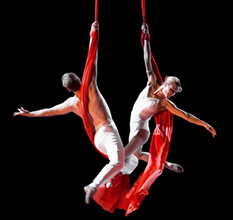The presentation of the Hugo Wolf Quartett by the University of North Carolina at Charlotte Department of Music is part of a grand master plan. UNC Charlotte is taking the arts seriously. In 2004, the Robinson Hall for the Performing Arts opened – a beautiful building with top-notch performance spaces, state-of-the-art technology, and excellent practice, rehearsal, and teaching facilities. As this academic year began, the university launched its newly organized College of Arts and Architecture, an academic structure that will bring greater recognition to and foster collaborations among the five disciplines of architecture, art and art history, music, dance, and theatre. And within the music department, there is a vigorous effort to both expand and strengthen the orchestral program, in particular the strings. The department has recently received funding for the establishment of a new string faculty position, which will be filled in coming months.
The decision to present the Hugo Wolf Quartett as part of the Guest Artists of the University Concert Series was largely motivated by this growing string program: The high-profile string quartet would perform a concert one night and present a master class for students the following morning.
Founded in 1993 at the Vienna Hochschule für Musik, the Hugo Wolff Quartett features violinists Sebastian Gürtler and Régis Bringolf, violist Gertrud Weinmeister, and cellist Florian Berner. The excellent quartet has won numerous prizes and regularly tours throughout Europe, Asia, and the Americas. The repertoire for the February 25th concert was rooted primarily in their musically historic homeland (quartets by Haydn and Schubert), with a nod to the “now” of North America (a short work by contemporary Canadian composer Kenny Wheeler).
Haydn’s String Quartet in G, Op. 77, No. 1 (Hob.III:81), the composer’s penultimate work in that genre, is a lovely, perfectly Classical piece, and the quartet played it with the grace, intelligence and precision the style demands. In the first two movements the cellist, in particular, demonstrated especial elegance and pureness of tone. The third movement is a showpiece for the first violin, and Mr. Gürtler tackled it with gusto, delivering clean, stratospheric pitches and fleet passage-work. The “Finale – Presto,” with its skipping theme that lands with a lunge on the submediant, brought the quartet to a lively close.
Kenny Wheeler, a jazz trumpeter who has worked with the likes of Paul Gonsalves, Lee Konitz, Dave Holland, and Keith Jarrett, is noted for his jazz-based compositions. But his String Quartet No. 1, a pleasant, 14-minute, single-movement work, bears little jazz influence. A brief introduction of strident whines gives way to a tonal, melody-driven piece. Rhythmically free sections alternate with episodes kept in time by a gentle, undulating pizzicato in the cello. Improvisatory tunes are passed among the instruments, from lowest to highest, and the work ends (rather perfunctorily) on a cheerful major chord.
The concert’s weight – and challenge – came after intermission, with Schubert’s String Quartet in G, D. 887. Composed in just ten days in 1826, this complex 45-minute work is Schubert’s final string quartet. Less famous than its predecessor, the “Death and the Maiden” quartet, the String Quartet in G is every bit as dramatic and even more difficult to play.
The Hugo Wolf Quartett had already demonstrated its dynamic control in the concert’s first half – ending, for example, the second movement of the Haydn with a delicate sigh. But the quartet’s opening crescendo in the Schubert was stunning, nevertheless. The wonderful dynamic variance continued throughout the first movement, with super-quiet, ethereal tremolos and a wistful second theme played as if but a memory. The second movement is dominated by the cello in a lyrical melody that starts with a yearning interval of a ninth. Here, Mr. Berner displayed a richer tone than in the Haydn, but one couldn’t help occasionally wishing for a warmer, fatter sound, à la Lynn Harrell, to match the movement’s pathos (when given the opportunity, the violist did produce such a tone). In the scurrying third movement “Scherzo” and energetic “Finale,” the quartet’s intonation sometimes frayed, but in all, the players delivered a thrilling performance of this exacting music.
The Anne R. Belk Theater, where the concert was held, is a superb 350-seat performance hall with fine acoustics and excellent sight lines. It was a lovely place to hear chamber music.
* We are delighted to welcome Meg Freeman Whalen to our ranks. For a brief bio, see About Us. Ed.












